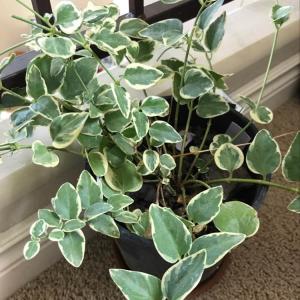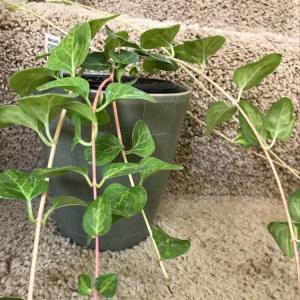文章
Miss Chen
2018年09月08日

The plant commonly called vinca (Catharanthus roseus) grows as a short, upright bush, covered in small pink or magenta flowers. It grows as a perennial in U.S. Department of Agriculture plant hardiness zones 10 through 11 but can be treated as a summer annual elsewhere. Vinca's close cousins, greater periwinkle (Vinca major), which grows in USDA zones 7 through 9, and common periwinkle (Vinca minor), which grows in USDA zones 4 through 9, can become invasive, but vinca doesn't usually spread beyond its garden bed.
Care Basics

Vinca flowers best in full sun. Although it can tolerate partial shade, too much shade inhibits flowering and results in sparse foliage. Trailing varieties can spread more than 18 inches wide, creating a sprawling ground cover, but most have a bushy form. Vinca can readily self-seed, even in areas where it usually grows as an annual, so plant it in beds where you plan to continue growing it or remove the seedlings when you see them.
Watering Needs

Drought-tolerant vinca survives even with infrequent watering. Water the soil only during extended dry periods if the plants begin to wilt even at night, otherwise rainfall and water from nearby areas of the yard will provide enough water. Vinca leaves may curl and appear wilted during the day when it's hot and dry, but they don't need additional water if they still unfurl during the cooler nights. Applying a 2-inch layer of mulch over the bare soil surrounding the plants conserves soil moisture and further minimizes the need for watering. Pull mulch back so it doesn't rest against the base of the vinca plants.
Regular Maintenance
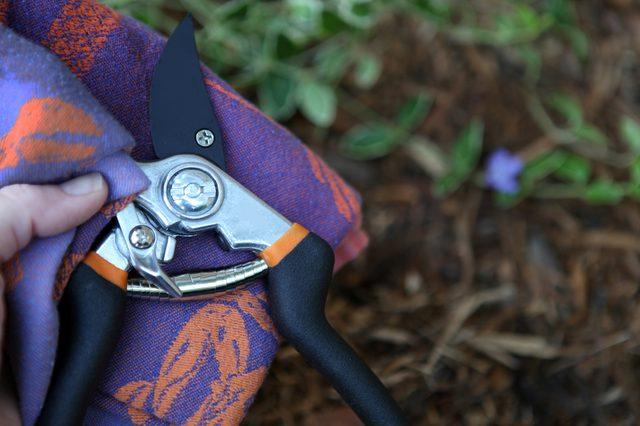
Once established, vinca doesn't require much care. If the plant looks sparse, cut back stems to encourage branching and new growth. Wipe the shears with a rubbing alcohol-soaked cloth before making a cut to disinfect them. Vinca also doesn't require deadheading, dropping its blooms naturally after the flower wilts. Light fertilization once a month during the spring and summer growing season helps keep the plants healthy. Water with an all-purpose soluble fertilizer. For example, 1 tablespoon of a 24-8-16 blend mixed with 1 gallon of water provides enough to feed 10 square feet of vinca plants.
Common Problems

Most vinca problems come from too much moisture or improper watering. Stem and root rot, fungal leaf spots and botrytis blight are most common in wet, overwatered beds or from wet foliage. Avoid overhead watering and keep water from splashing onto the leaves to prevent most diseases. Aphids may sometimes feed on the plant, but you can rinse them off with a blast of water from the garden hose. When rinsing off aphids, do so in the morning so the leaves dry before nightfall.
Care Basics

Vinca flowers best in full sun. Although it can tolerate partial shade, too much shade inhibits flowering and results in sparse foliage. Trailing varieties can spread more than 18 inches wide, creating a sprawling ground cover, but most have a bushy form. Vinca can readily self-seed, even in areas where it usually grows as an annual, so plant it in beds where you plan to continue growing it or remove the seedlings when you see them.
Watering Needs

Drought-tolerant vinca survives even with infrequent watering. Water the soil only during extended dry periods if the plants begin to wilt even at night, otherwise rainfall and water from nearby areas of the yard will provide enough water. Vinca leaves may curl and appear wilted during the day when it's hot and dry, but they don't need additional water if they still unfurl during the cooler nights. Applying a 2-inch layer of mulch over the bare soil surrounding the plants conserves soil moisture and further minimizes the need for watering. Pull mulch back so it doesn't rest against the base of the vinca plants.
Regular Maintenance

Once established, vinca doesn't require much care. If the plant looks sparse, cut back stems to encourage branching and new growth. Wipe the shears with a rubbing alcohol-soaked cloth before making a cut to disinfect them. Vinca also doesn't require deadheading, dropping its blooms naturally after the flower wilts. Light fertilization once a month during the spring and summer growing season helps keep the plants healthy. Water with an all-purpose soluble fertilizer. For example, 1 tablespoon of a 24-8-16 blend mixed with 1 gallon of water provides enough to feed 10 square feet of vinca plants.
Common Problems

Most vinca problems come from too much moisture or improper watering. Stem and root rot, fungal leaf spots and botrytis blight are most common in wet, overwatered beds or from wet foliage. Avoid overhead watering and keep water from splashing onto the leaves to prevent most diseases. Aphids may sometimes feed on the plant, but you can rinse them off with a blast of water from the garden hose. When rinsing off aphids, do so in the morning so the leaves dry before nightfall.
0
1
文章
Dummer. ゛☀
2017年09月25日

Scientific Name
Catharanthus trichophyllus (Baker) Pichon

Synonyms
Lochnera trichophylla, Vinca trichophylla
Scientific Classification
Family: Apocynaceae
Genus: Catharanthus
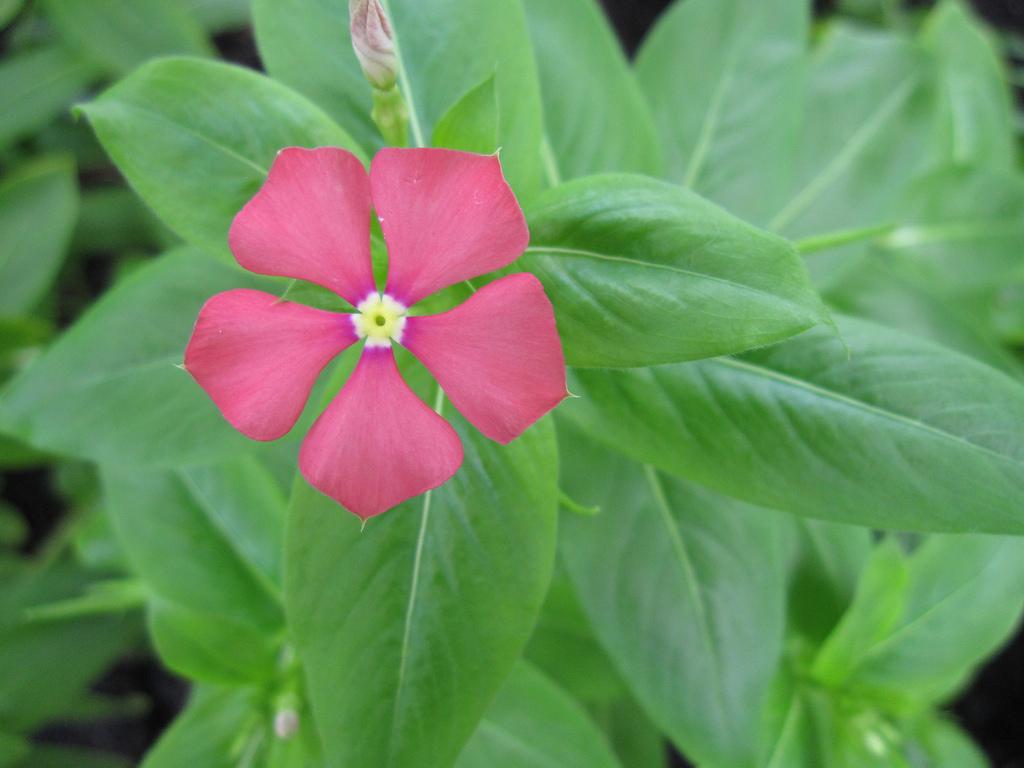
Flower
Color: White, pink, red, or purple, with yellowish centers
Bloom Time: From summer to frost
Description
Catharanthus trichophyllus is a perennial herb up to 3.3 feet (1 m) tall. It contains a white latex. The stems and branches are squared, winged, and reddish or purplish in color. The oppositely arranged leaves have hairy, pointed oval blades up to 3.4 inches (8.5 cm) long. They are each accompanied by several stipules. Flowers occur singly or in pairs in the leaf axils. The calyx is up to a 0.4 inch (1 cm) long and has 5 long, narrow lobes. The corolla has a tubular throat up to 0.8 inch (2 cm) long opening into five lobes each up to 0.7 inch (1.8 cm) long. The flowers may be white, pink, red, or purple, with yellowish centers. It has an unpleasant scent. The fruit is a pair of greenish or purplish follicles up to 2.8 inches (7 cm) long. Each contains 10 to 20 seeds.

How to Grow and Care
Madagascar Periwinkle is native to Madagascar but is cultivated and naturalized in most of the tropical world and in warmer climates in the United States. It can be found in a variety of woodland, forest and grassland locales, but one of its primary uses is a bedding plant in highway medians or commercial landscapes. Madagascar Periwinkle also makes a striking clumping plant for home gardens as ground cover, in beddings or edgings or in containers.
Unlike many other plants, Madagascar Periwinkle is best suited for poor, well-drained soil and may even fail to thrive in soils that are too fertile. These plants need regular moisture but don’t do well with overhead watering. Madagascar Periwinkle is easily propagated with semi-ripe cuttings planted in light compost with bottom heat and high humidity, or by seeds kept in the dark at 71 to 77 degrees Fahrenheit (22 to 25 degrees Celsius) until germination. The leaves may curl during the heat of the day but recover with evening dew. The flowers drop off after blooming and don’t require deadheading.
Origin
It is endemic to Madagascar, where it is most common in northern regions.
Catharanthus trichophyllus (Baker) Pichon

Synonyms
Lochnera trichophylla, Vinca trichophylla
Scientific Classification
Family: Apocynaceae
Genus: Catharanthus

Flower
Color: White, pink, red, or purple, with yellowish centers
Bloom Time: From summer to frost
Description
Catharanthus trichophyllus is a perennial herb up to 3.3 feet (1 m) tall. It contains a white latex. The stems and branches are squared, winged, and reddish or purplish in color. The oppositely arranged leaves have hairy, pointed oval blades up to 3.4 inches (8.5 cm) long. They are each accompanied by several stipules. Flowers occur singly or in pairs in the leaf axils. The calyx is up to a 0.4 inch (1 cm) long and has 5 long, narrow lobes. The corolla has a tubular throat up to 0.8 inch (2 cm) long opening into five lobes each up to 0.7 inch (1.8 cm) long. The flowers may be white, pink, red, or purple, with yellowish centers. It has an unpleasant scent. The fruit is a pair of greenish or purplish follicles up to 2.8 inches (7 cm) long. Each contains 10 to 20 seeds.

How to Grow and Care
Madagascar Periwinkle is native to Madagascar but is cultivated and naturalized in most of the tropical world and in warmer climates in the United States. It can be found in a variety of woodland, forest and grassland locales, but one of its primary uses is a bedding plant in highway medians or commercial landscapes. Madagascar Periwinkle also makes a striking clumping plant for home gardens as ground cover, in beddings or edgings or in containers.
Unlike many other plants, Madagascar Periwinkle is best suited for poor, well-drained soil and may even fail to thrive in soils that are too fertile. These plants need regular moisture but don’t do well with overhead watering. Madagascar Periwinkle is easily propagated with semi-ripe cuttings planted in light compost with bottom heat and high humidity, or by seeds kept in the dark at 71 to 77 degrees Fahrenheit (22 to 25 degrees Celsius) until germination. The leaves may curl during the heat of the day but recover with evening dew. The flowers drop off after blooming and don’t require deadheading.
Origin
It is endemic to Madagascar, where it is most common in northern regions.
0
0
文章
Dummer. ゛☀
2017年09月25日

Scientific Name
Catharanthus roseus (L.) G. Don

Common Names
Madagascar Periwinkle, Periwinkle, Rosy Periwinkle, Teresita, Annual Vinca
Synonyms
Vinca rosea (basionym), Ammocallis rosea, Catharanthus roseus var. roseus, Hottonia littoralis, Lachnea rosea, Lochnera rosea, Pervinca rosea, Vinca gulielmi-waldemarii, Vinca speciosa
Scientific Classification
Family: Apocynaceae
Genus: Catharanthus

Flower
Color: White to dark pink with a darker red center
Bloom Time: From summer to frost
Description
Catharanthus roseus is an evergreen subshrub or herbaceous plant growing up to 3.3 feet (1 m) tall. The leaves are oval to oblong, up to 3.6 inches (9 cm) long and up to 2 inches (3.5 cm) broad, glossy green, hairless, with a pale midrib and a short petiole up to 0.7 inch (1.8 cm) long. They are arranged in opposite pairs. The flowers are white to dark pink with a darker red center, with a basal tube up to 1.2 inches (3 cm) long and a corolla up to 2 inches (5 cm) in diameter with five petal-like lobes. The fruit is a pair of follicles up to 1.6 inches (4 cm) long.

How to Grow and Care
Madagascar Periwinkle is native to Madagascar but is cultivated and naturalized in most of the tropical world and in warmer climates in the United States. It can be found in a variety of woodland, forest and grassland locales, but one of its primary uses is a bedding plant in highway medians or commercial landscapes. Madagascar Periwinkle also makes a striking clumping plant for home gardens as ground cover, in beddings or edgings or in containers.
Unlike many other plants, Madagascar Periwinkle is best suited for poor, well-drained soil and may even fail to thrive in soils that are too fertile. These plants need regular moisture but don’t do well with overhead watering. Madagascar Periwinkle is easily propagated with semi-ripe cuttings planted in light compost with bottom heat and high humidity, or by seeds kept in the dark at 71 to 77 degrees Fahrenheit (22 to 25 degrees Celsius) until germination. The leaves may curl during the heat of the day but recover with evening dew. The flowers drop off after blooming and don’t require deadheading.
Origin
Native and endemic to Madagascar, but grown elsewhere as an ornamental and medicinal plant, a source of the drugs vincristine and vinblastine, used to treat cancer.
Catharanthus roseus (L.) G. Don

Common Names
Madagascar Periwinkle, Periwinkle, Rosy Periwinkle, Teresita, Annual Vinca
Synonyms
Vinca rosea (basionym), Ammocallis rosea, Catharanthus roseus var. roseus, Hottonia littoralis, Lachnea rosea, Lochnera rosea, Pervinca rosea, Vinca gulielmi-waldemarii, Vinca speciosa
Scientific Classification
Family: Apocynaceae
Genus: Catharanthus

Flower
Color: White to dark pink with a darker red center
Bloom Time: From summer to frost
Description
Catharanthus roseus is an evergreen subshrub or herbaceous plant growing up to 3.3 feet (1 m) tall. The leaves are oval to oblong, up to 3.6 inches (9 cm) long and up to 2 inches (3.5 cm) broad, glossy green, hairless, with a pale midrib and a short petiole up to 0.7 inch (1.8 cm) long. They are arranged in opposite pairs. The flowers are white to dark pink with a darker red center, with a basal tube up to 1.2 inches (3 cm) long and a corolla up to 2 inches (5 cm) in diameter with five petal-like lobes. The fruit is a pair of follicles up to 1.6 inches (4 cm) long.

How to Grow and Care
Madagascar Periwinkle is native to Madagascar but is cultivated and naturalized in most of the tropical world and in warmer climates in the United States. It can be found in a variety of woodland, forest and grassland locales, but one of its primary uses is a bedding plant in highway medians or commercial landscapes. Madagascar Periwinkle also makes a striking clumping plant for home gardens as ground cover, in beddings or edgings or in containers.
Unlike many other plants, Madagascar Periwinkle is best suited for poor, well-drained soil and may even fail to thrive in soils that are too fertile. These plants need regular moisture but don’t do well with overhead watering. Madagascar Periwinkle is easily propagated with semi-ripe cuttings planted in light compost with bottom heat and high humidity, or by seeds kept in the dark at 71 to 77 degrees Fahrenheit (22 to 25 degrees Celsius) until germination. The leaves may curl during the heat of the day but recover with evening dew. The flowers drop off after blooming and don’t require deadheading.
Origin
Native and endemic to Madagascar, but grown elsewhere as an ornamental and medicinal plant, a source of the drugs vincristine and vinblastine, used to treat cancer.
0
0
文章
Dummer. ゛☀
2017年09月16日

Vinca stem canker, Phoma exigua, is a fungal disease that is almost always prevalent during very rainy seasons. This fungal disease of periwinkle or ground myrtle causes shoot tips to become dark brown changing to nearly black as the disease progresses. Stem canker (blight) may be so severe that attempts to maintain vinca plantings fail, and the plants have to be removed and replaced with other non-susceptible ground covers. Damage is most prevalent in cool wet weather in spring and in autumn when soil moisture is high. Newly planted beds, where plantings are thin and not well established, are very susceptible.
Incidence of the disease tapers off during the hot dry weather of summer; however, in prolonged periods of cool wet weather, new infections can occur. Stem canker can also be a severe problem in nurseries where plants are grown under mist propagation.
The fungus grows and persists indefinitely in moist soil and plant debris. It is not unusual for new plants to appear healthy when purchased only to become diseased when planted. The causal fungus survives in infested plant debris which is difficult to remove.
Symptoms and Diagnosis
Soon after new green shoots appear in spring, vinca stem canker, Phoma exigua, causes shoot tips to become dark brown, wilt, and die back to the soil surface. Some affected stems are nearly black. After several weeks, entire clumps of plants may wither and die. Small, black, dot-like, fruiting bodies develop on the surface of the diseased stem tissue.
Life Cycle
The sexual stage of this fungus is known as Diaporthe vincae. The spores are produced during very rainy seasons. The fungus grows saprophytically throughout moist soil and commonly colonizes dead and dying plant material. The fungus is believed to overwinter as dormant mycelium and as specksized, brown to black fruiting bodies (pycnidia) on the dead stems and leaves.
The cycle of infection, disease development, symptom expression, and re-infection may be repeated as long as cool, damp conditions prevail and the soil moisture remains high.
Integrated Pest Management Strategies
1. Removal of debris. Remove infected plants and prune out diseased parts of the plant in the fall and spring. Discard this material but do not compost. Thin planting in the fall during dry weather to remove dense growth.
2. Purchase disease-free plants. For new beds, select and plant only vigorous, disease-free stock purchased from a reputable nursery.
3. Water. After transplanting, apply only enough water to maintain vigor. Avoid frequent watering if the soil is sufficiently moist for good growth.
4. Fungicides. Under conditions in the spring of extensive and frequent rainfall, fungicides can be applied to diseases beds every 7–10 days. Application should cover all leaves and stems to runoff. Thorough coverage is essential to be effective.

Incidence of the disease tapers off during the hot dry weather of summer; however, in prolonged periods of cool wet weather, new infections can occur. Stem canker can also be a severe problem in nurseries where plants are grown under mist propagation.
The fungus grows and persists indefinitely in moist soil and plant debris. It is not unusual for new plants to appear healthy when purchased only to become diseased when planted. The causal fungus survives in infested plant debris which is difficult to remove.

Symptoms and Diagnosis
Soon after new green shoots appear in spring, vinca stem canker, Phoma exigua, causes shoot tips to become dark brown, wilt, and die back to the soil surface. Some affected stems are nearly black. After several weeks, entire clumps of plants may wither and die. Small, black, dot-like, fruiting bodies develop on the surface of the diseased stem tissue.
Life Cycle
The sexual stage of this fungus is known as Diaporthe vincae. The spores are produced during very rainy seasons. The fungus grows saprophytically throughout moist soil and commonly colonizes dead and dying plant material. The fungus is believed to overwinter as dormant mycelium and as specksized, brown to black fruiting bodies (pycnidia) on the dead stems and leaves.

The cycle of infection, disease development, symptom expression, and re-infection may be repeated as long as cool, damp conditions prevail and the soil moisture remains high.
Integrated Pest Management Strategies
1. Removal of debris. Remove infected plants and prune out diseased parts of the plant in the fall and spring. Discard this material but do not compost. Thin planting in the fall during dry weather to remove dense growth.

2. Purchase disease-free plants. For new beds, select and plant only vigorous, disease-free stock purchased from a reputable nursery.
3. Water. After transplanting, apply only enough water to maintain vigor. Avoid frequent watering if the soil is sufficiently moist for good growth.
4. Fungicides. Under conditions in the spring of extensive and frequent rainfall, fungicides can be applied to diseases beds every 7–10 days. Application should cover all leaves and stems to runoff. Thorough coverage is essential to be effective.
0
0
文章
Dummer. ゛☀
2017年08月29日

Periwinkle, also known as Vinca or creeping myrtle, is one of the easiest to grow ground covers or trailing plants. However, its tendency to root at the internodes where stems touch the ground can make it an invasive competitor to other plants. Getting rid of periwinkle takes some serious elbow grease unless you wish to resort to chemicals. There are at least two useful periwinkle control methods in the following text.
Periwinkle Control Methods
Periwinkle is a very popular ground cover due to its glossy evergreen leaves and bright starry blue flowers. The plants establish and grow quickly, with remarkable tolerance to poor soils, unfavorable weather conditions and even mechanical damage. Mowing or string trimming the plant to keep it in a manageable condition works well in containing the tangled stems. But be cautious with the trimmings, as periwinkle will produce new plants with just a tiny bit of stem to ground contact, even once severed from the parent plant. This creates an issue, and many gardeners evince the desire to completely remove periwinkle ground cover.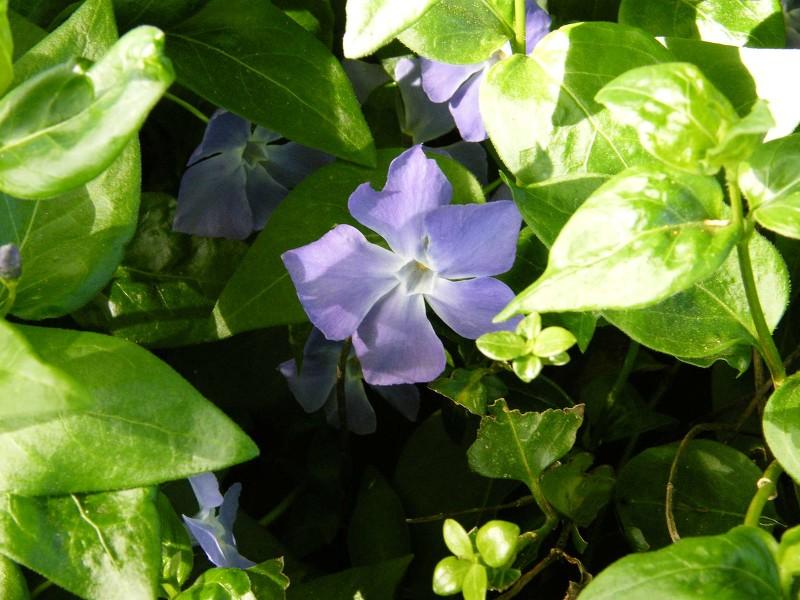
It may seem sensible to just pull the plants, but any little bit of plant material or the presence of underground stems will send Vinca growing thickly again in no time. The waxy leaves are quite resistant to chemical herbicides as the cuticle repels any topical application. Control of periwinkle must remove all of the roots and stems to prevent recurrence. Some plants can be grazed out, but periwinkle is not edible to grazing animals due to a milky latex sap. Manual removal is the least toxic method but the roots may grow several feet in the ground so deep digging is necessary.
Control of Periwinkle with Herbicides
Several states classify periwinkle as an invasive weed. For periwinkle weed control in large areas where digging is not practical, use an oil based herbicide. The cuticle on the leaves repels water based applications, but the oil base will allow the chemicals to adhere to the leave and gradually travel into the vascular system of the plant. Triclopyr mixed with mineral oil is effective but applications will need to be repeated as straggler plants crop up. Getting rid of periwinkle generally takes several seasons no matter what method you choose because of its hardiness and tenacity. Spray in winter when all other nearby vegetation has died back.
Remove Periwinkle Ground Cover Manually
Alright, it sounds like a pain in the-you-know-what, but manual removal really works best. Dig deep into the soil, starting at the edge of the problem area. Remember that periwinkle weed control relies upon complete removal of those roots, which may be several feet into the soil. Make a two-foot trench around the area and loosen the first section of roots. Pull as you dig further into the bed, loosening the soil as you go. The next season, if you see any small plants forming, immediately dig them out.
In this way you will be rid of the ground cover permanently in a couple of years and other plants can take over the area. It won’t be easy, but it is a non-toxic removal that is effective.

Periwinkle Control Methods
Periwinkle is a very popular ground cover due to its glossy evergreen leaves and bright starry blue flowers. The plants establish and grow quickly, with remarkable tolerance to poor soils, unfavorable weather conditions and even mechanical damage. Mowing or string trimming the plant to keep it in a manageable condition works well in containing the tangled stems. But be cautious with the trimmings, as periwinkle will produce new plants with just a tiny bit of stem to ground contact, even once severed from the parent plant. This creates an issue, and many gardeners evince the desire to completely remove periwinkle ground cover.

It may seem sensible to just pull the plants, but any little bit of plant material or the presence of underground stems will send Vinca growing thickly again in no time. The waxy leaves are quite resistant to chemical herbicides as the cuticle repels any topical application. Control of periwinkle must remove all of the roots and stems to prevent recurrence. Some plants can be grazed out, but periwinkle is not edible to grazing animals due to a milky latex sap. Manual removal is the least toxic method but the roots may grow several feet in the ground so deep digging is necessary.

Control of Periwinkle with Herbicides
Several states classify periwinkle as an invasive weed. For periwinkle weed control in large areas where digging is not practical, use an oil based herbicide. The cuticle on the leaves repels water based applications, but the oil base will allow the chemicals to adhere to the leave and gradually travel into the vascular system of the plant. Triclopyr mixed with mineral oil is effective but applications will need to be repeated as straggler plants crop up. Getting rid of periwinkle generally takes several seasons no matter what method you choose because of its hardiness and tenacity. Spray in winter when all other nearby vegetation has died back.

Remove Periwinkle Ground Cover Manually
Alright, it sounds like a pain in the-you-know-what, but manual removal really works best. Dig deep into the soil, starting at the edge of the problem area. Remember that periwinkle weed control relies upon complete removal of those roots, which may be several feet into the soil. Make a two-foot trench around the area and loosen the first section of roots. Pull as you dig further into the bed, loosening the soil as you go. The next season, if you see any small plants forming, immediately dig them out.

In this way you will be rid of the ground cover permanently in a couple of years and other plants can take over the area. It won’t be easy, but it is a non-toxic removal that is effective.
0
0
文章
Dummer. ゛☀
2017年08月29日

The common periwinkle plant (Vinca minor) is often spotted creeping down steep hillsides and banks, offering a green and growing affect in areas which might otherwise be bare. The periwinkle plant is exceptional as an erosion control specimen. Periwinkle is also used as a spreading shrub in USDA garden zones 4 to 8. Periwinkle is often also called creeping vinca. Periwinkle is most often grown as a ground cover. The periwinkle plant takes its common name from the attractive blooms that dot the foliage in April to May, appearing in the color of periwinkle blue. More than 30 varieties of this plant exist, some with variegated foliage and other colors of blooms. When planting periwinkle, choose what best suits your landscape.
How to Grow Periwinkle Plants
This broadleaf evergreen plant grows easily and periwinkle care most often involves keeping the prolific spreader in check. Periwinkle, once established, is drought resistant and needs little other care if properly sited in the landscape. Periwinkle care after planting may include the removal of tall weeds in the area. Once established, growing periwinkle will likely shade out future growth of weeds and eliminate this chore.
The periwinkle plant grows best in a partially shaded area in acidic soil; however, it can thrive in a variety of sunlight and soil conditions. Growing periwinkle in partial shade creates more vigorous growth. In many instances, extreme vigor may not be desirable unless the periwinkle plant needs to cover a large area. One small plant can spread to 8 feet across. Growing periwinkle as a ground cover is common as it rarely reaches more than 4 inches in height. Periwinkle is best used for controlling erosion as described above. Do not plant near other specimens in the flower bed or garden, as it may overtake and choke out valuable plantings. This plant may be used as a climber on a non-living support and is useful for blocking views when used in this way.
Before planting periwinkle, make sure it is what you want in the area, as it is difficult to remove once established. Periwinkle appears low on the exotic invasive list, but can escape cultivation in the garden. It is rarely found escaping into undisturbed woodlands. Now that you know how to grow periwinkle and manage its growth, you can make an informed decision before planting the specimen in your landscape. Periwinkle ground cover should not be confused with annual periwinkle, as annual periwinkle (Catharanthus roseus) is a different plant.

How to Grow Periwinkle Plants
This broadleaf evergreen plant grows easily and periwinkle care most often involves keeping the prolific spreader in check. Periwinkle, once established, is drought resistant and needs little other care if properly sited in the landscape. Periwinkle care after planting may include the removal of tall weeds in the area. Once established, growing periwinkle will likely shade out future growth of weeds and eliminate this chore.

The periwinkle plant grows best in a partially shaded area in acidic soil; however, it can thrive in a variety of sunlight and soil conditions. Growing periwinkle in partial shade creates more vigorous growth. In many instances, extreme vigor may not be desirable unless the periwinkle plant needs to cover a large area. One small plant can spread to 8 feet across. Growing periwinkle as a ground cover is common as it rarely reaches more than 4 inches in height. Periwinkle is best used for controlling erosion as described above. Do not plant near other specimens in the flower bed or garden, as it may overtake and choke out valuable plantings. This plant may be used as a climber on a non-living support and is useful for blocking views when used in this way.

Before planting periwinkle, make sure it is what you want in the area, as it is difficult to remove once established. Periwinkle appears low on the exotic invasive list, but can escape cultivation in the garden. It is rarely found escaping into undisturbed woodlands. Now that you know how to grow periwinkle and manage its growth, you can make an informed decision before planting the specimen in your landscape. Periwinkle ground cover should not be confused with annual periwinkle, as annual periwinkle (Catharanthus roseus) is a different plant.
0
0
文章
Miss Chen
2017年08月15日

Vinca, also known as catharanthus or Madagascar periwinkle, is a popular annual flower. Growing upwards to 10 to 16 inches tall, with dark green leaves and five-petal blossoms in pink, mauve or white, these flowers spread quickly and require little care. While vincas have few problems, occasionally they will suddenly wilt and die.

Symptoms and Causes
According to the Alabama Agricultural Experiment Station and Clemson University Extension, there are several diseases and fungus that can cause vincas to wilt, including phytophthora stem blight and root rot, pythium root rot, rhizoctonia stem and root rot, gray mold and the tomato spotted wilt virus. Symptoms of these diseases and fungus include dark colored lesions on the stems and branches, yellowing leaves with stunted growth, spots on the foliage, gray mold on the plant or black concentric rings on the leaves.
Many of these diseases and fungus are prevalent in soil that has poor drainage or gardens that have been watered incorrectly.
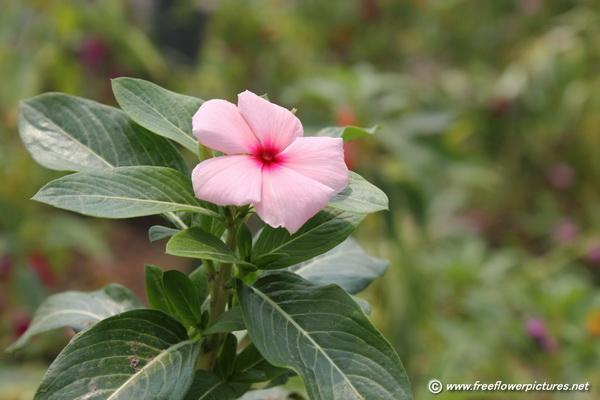
Prevention and Treatment
Select healthy vinca to plant in the garden. Enrich the garden's soil with well-rotted manure or compost before planting to help increase the soil's moisture-retention. Do not plant the vinca deeply and space 8 to 12 inches apart to allow for air circulation. Vincas need about 1 inch of water each week; if rainfall is insufficient, avoid overhead irrigation systems and water deeply in the early morning to allow the plants time to dry before nightfall.
Remove and destroy any affected plants. Treat the remaining plants with a fungicide; contact your local extension office to determine which fungicide is needed.

Symptoms and Causes
According to the Alabama Agricultural Experiment Station and Clemson University Extension, there are several diseases and fungus that can cause vincas to wilt, including phytophthora stem blight and root rot, pythium root rot, rhizoctonia stem and root rot, gray mold and the tomato spotted wilt virus. Symptoms of these diseases and fungus include dark colored lesions on the stems and branches, yellowing leaves with stunted growth, spots on the foliage, gray mold on the plant or black concentric rings on the leaves.
Many of these diseases and fungus are prevalent in soil that has poor drainage or gardens that have been watered incorrectly.

Prevention and Treatment
Select healthy vinca to plant in the garden. Enrich the garden's soil with well-rotted manure or compost before planting to help increase the soil's moisture-retention. Do not plant the vinca deeply and space 8 to 12 inches apart to allow for air circulation. Vincas need about 1 inch of water each week; if rainfall is insufficient, avoid overhead irrigation systems and water deeply in the early morning to allow the plants time to dry before nightfall.
Remove and destroy any affected plants. Treat the remaining plants with a fungicide; contact your local extension office to determine which fungicide is needed.
0
0





